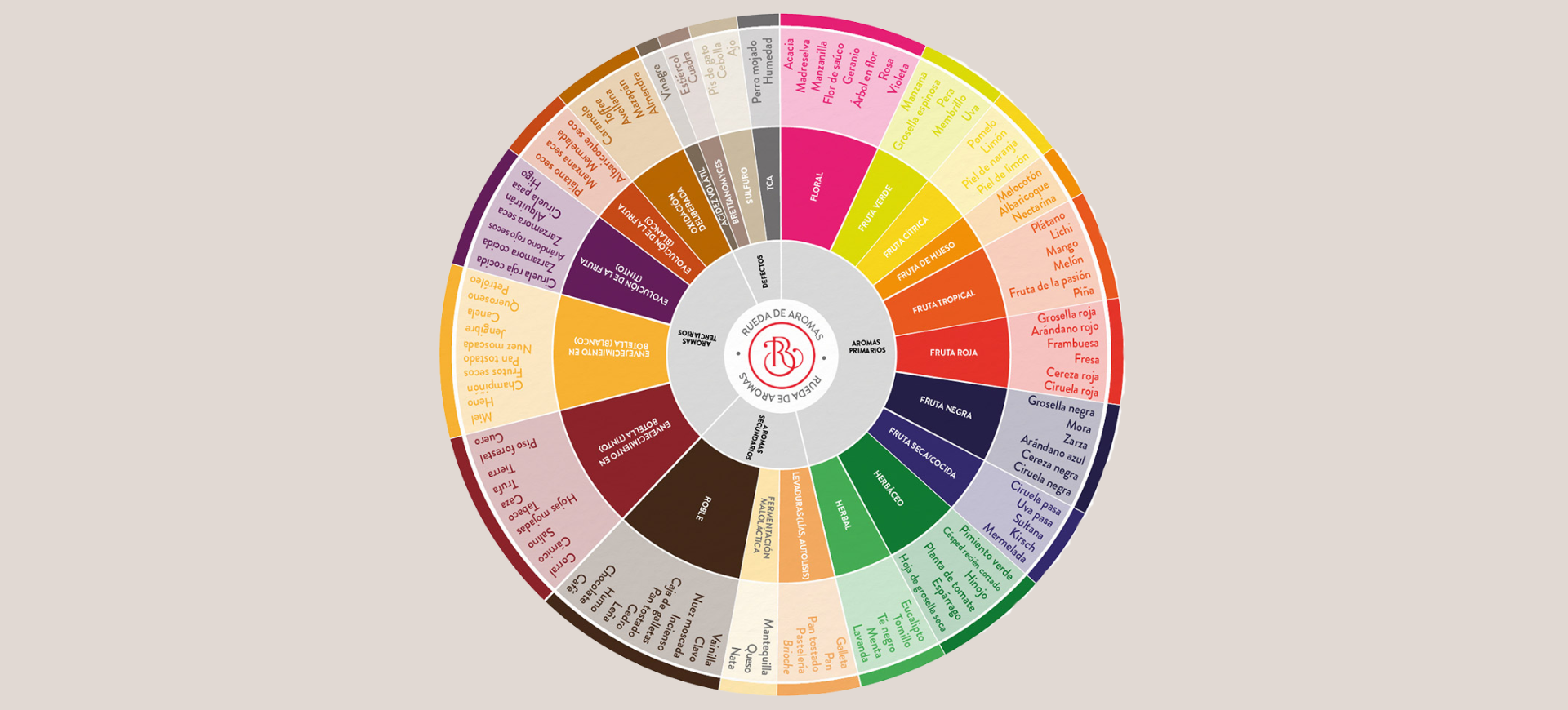Learn how to identify and understand wine aromas, from fruity to complex notes. An essential guide to enhance your wine tasting experience.
When you think of wine, probably the first thing that comes to mind is its taste. But what many people don’t know is that the aroma of wine is just as important — if not more so — than its flavor. In fact, our sense of smell accounts for up to 80% of what we perceive when tasting wine. Understanding the different types of aromas not only enriches the experience, but also reveals a lot about the wine’s origin, grape variety, and winemaking process.
What Are Wine Aromas?
Wine aromas are volatile compounds that are released when the wine is served in a glass and are perceived through the sense of smell. These aromas are generally classified into three main groups: primary, secondary, and tertiary. Each one tells a different part of the wine’s story.
Primary Aromas: The Soul of the Grape
These come directly from the grape variety and its terroir (climate, soil, and altitude). They are typically present in young wines and are easy to recognize. Common examples include:
-
-
Fruits: apple, pear, citrus, red or tropical fruits
-
Flowers: rose, violet, jasmine
-
Herbs: mint, hay, eucalyptus
-
For example, a young Viura often presents fresh aromas of green apple, lemon, and white flowers like jasmine. In contrast, a Tempranillo red may show notes of strawberry, ripe cherry, and subtle hints of violet or plum, especially when grown in warmer areas.
Secondary Aromas: The Mark of Fermentation
These aromas develop during the alcoholic or malolactic fermentation process. This is where compounds form that can provide notes such as:
-
-
Yeast, toasted bread
-
Cheese, yogurt
-
Butter or cream
-
A barrel-fermented white wine can develop a pronounced butter or brioche aroma as a result of a more complex fermentation process.
Tertiary Aromas: The Passage of Time
Tertiary aromas arise during aging in barrel or bottle, and are typically more complex and layered. They reflect the evolution of the wine and give it depth and character.
American Oak Aromas:
Known for their exotic and intense notes, including coconut, vanilla, caramel, and toffee. They may also offer stronger aromas such as coffee, smoke, tobacco, and cocoa, along with sweet sensations reminiscent of caramel and toffee that create a warm, enveloping profile.
French Oak Aromas:
Tend to be more delicate and subtle, with notes of vanilla, honey, toasted nuts, and sweet spices. They can also bring balsamic notes such as pine and resin, and a pleasant spiciness with touches of cinnamon, clove, black pepper, and anise.
Both types of oak often impart aromas of smoke, aged wood, and damp earth, adding further depth and complexity to the wine.
These tertiary aromas are at the heart of a Rioja Reserva’s character and clearly distinguish it from young or unoaked wines.
How to Smell Wine Aromas
The key is to gently swirl the glass to release the aromatic compounds, then inhale slowly through the nose. It’s not just about smelling, but about identifying specific notes and mentally categorizing them.
A practical tip is to use a wine aroma wheel, a visual tool that groups aromas by families (fruits, flowers, spices, etc.). This helps you train your nose and give names to what you sense.

Why Is Recognizing Aromas Important?
Aromas not only enhance the sensory experience, but also provide key clues about a wine’s quality, age, and typicity. For example, a wine with intense, balanced aromas is often of higher quality. On the other hand, if you detect smells like vinegar or wet cardboard, the wine may be faulty.
Additionally, understanding aromas will help you pair wine and food more effectively, allowing for more harmonious combinations.
Conclusion
Mastering the art of smelling wine isn’t just for experts. Any wine lover can learn to recognize and enjoy wine aromas with practice and curiosity. So next time you pour a glass, take a moment to close your eyes, inhale deeply, and let yourself be guided by the layers of scent. Because every aroma tells a story… and you’re about to uncover it.
To learn more about the world of wine, the Rioja DOCa, and our winery, don’t hesitate to visit our blog every Thursday and follow us on social media: @ziniobodegas.